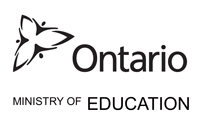Bluffer’s Park Montessori School
Here For You
In Scarborough
Call us today to book a tour!
647.340.9099
Our Casa Program is designed to meet the needs of young children between the ages of 2.9 years and 6 years of age. The program offers many opportunities for children to grow, learn and explore in a respectful environment that supports their individual needs.
Our core curriculum focuses on five subject areas: Practical Life, Sensorial, Language, Mathematics and Culture. In addition to these five areas, the children are also exposed to French, Music, Art and Brain Gym.
PRACTICAL LIFE
Practical Life exercises prepare the child for all other areas in life. The emphasis is on the process rather than the product. Through repetition of Practical Life activities, children develop and refine the basic skills that will serve them all their lives. Examples of early Practical Life Exercises are: pouring, washing linens, spooning, bead stringing, polishing, serving and setting the table, folding cloths, and large water activities. These activities are aimed to enhance the child’s development of fine motor control, hand-eye coordination, balance, sense of order, concentration and independence.
LANGUAGE
Children are exposed to language learning opportunities on a daily basis in a Montessori classroom. Teachers speak using enriched vocabulary, tell stories and sing songs. Children begin to work with Sandpaper Letters to learn specific sounds and as they progress at their own pace, they will start to create words, read and write, and work with various activities to develop an understanding of grammar. Examples of Language Materials are: vocabulary classification, matching exercises, and the movable alphabet. These activities are aimed to develop visual perception, enrich vocabulary development, and develop the left to right movement. Metal insets are also designed to contribute to the development of the mechanical writing skills and are used simultaneously with the introduction of sandpaper letters. They also help develop wrist movement, develop control of a pencil and appreciation of design.
SENSORIAL
Children learn through their senses, taking in and understanding the world around them. The Sensorial materials in the classroom help to refine the child’s five senses: tactile, visual, auditory, olfactory and gustatory senses. Examples of Sensorial Materials are: cylinder blocks, pink tower, broad stair, red rods, colored cylinders, and the binomial and trinomial cube. These activities are aimed to help the child classify and identify various objects according to size, shape, weight, colour, temperature, and smell.
MATHEMATICS
Children in a Montessori classroom learn mathematical concepts by manipulating concrete materials and then progressing towards the abstract. Mathematical materials are designed so that the child can start with simple materials and move on to more complex concepts. Examples of Mathematical Materials are: number rods, spindle boxes, numerals and counters, tens and teens boards, short and long bead chains, the bank game, the stamp game, and the small bead frame. These materials allow the child to comprehend both the physical and abstract nature of numbers building a strong understanding of counting and the decimal system.
CULTURE
Cultural activities build on the practical life and sensorial experiences of the children and introduce them to music, art, cultures and traditions of the world, as well as basic concepts in geography and science. Examples of Cultural Activities are: land and water formations, the continents and oceans and their cultures, the flags of the world, and the basic parts of plants and animals. More concrete opportunities for cultural activities exist through playing with bells, easel painting, and working with puzzle maps.

